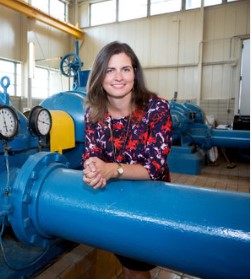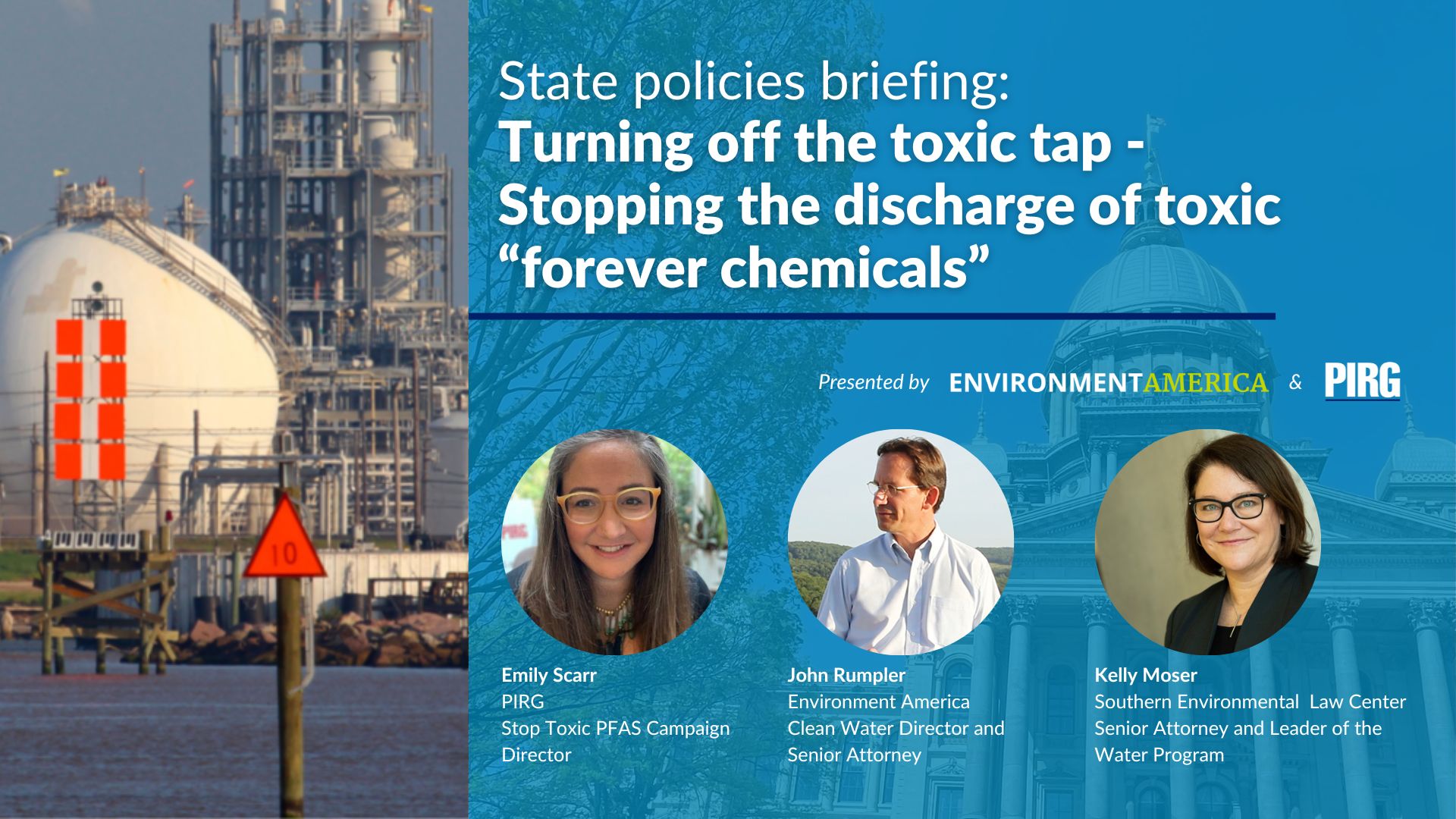
Filter First Colorado
Why lead in drinking water poses a threat to our children, and what parents and school districts can do to ensure access to safe drinking water.
Updated

All children deserve access to safe drinking water where they go to learn and play every day.
In 2021, a national study found 72% of Colorado children under 6 who were tested had detectable levels of lead in their blood, far above the national rate of 51%. This is alarming, as lead is highly toxic, especially for young children.
Unfortunately, many schools and child care centers across the country have lead in their faucets, fountains, pipes or plumbing, leading to widespread lead contamination of schools’ drinking water.
While Colorado has recently taken action to help mitigate lead contamination, the current law relies on testing instead of prevention and uses standards that still allow some health-threatening levels of lead to persist in our children’s water at school.
With unprecedented funding now available, Colorado school districts have an opportunity to “filter first,” and ensure all drinking water in schools is lead free.
With current funding available, school districts have a window of opportunity to act.Alex Simon
Public Health Advocate, CoPIRG

Where there is lead, there is risk of contamination
Many schools have at least some lead in their plumbing system, pipes or fixtures. And wherever lead comes into contact with water, there is risk of contamination.
Lead service lines were common nationwide until the passage of the federal Safe Drinking Water Act of 1986. And it wasn’t until 2014 that the federal government restricted the levels of lead used in pipes, pipe fittings, plumbing fittings, and fixtures.
In Denver, the city is in the middle of a 15-year Lead Reduction Program to replace the lead service lines, which are estimated to impact 64,000-84,000 properties in the city (including my house in the West Highlands). The city provides me with a Britta filter to remove lead until the project is complete.

But this isn’t just a problem in Denver.
As more schools test their water for lead, they are finding widespread contamination, everywhere from rural towns to major cities and affluent suburbs.
Experts agree: there is NO safe level of lead for children
Lead is a potent neurotoxin that affects how children learn, grow and behave.
According to major health organizations, there is no known safe level of lead for children.
As part of National Lead Poisoning Prevention Awareness Week, I hosted a webinar featuring a pediatrician who specializes in environmental health threats, Dr. Mark Anderson.
Dr. Anderson stressed that even very low levels of lead can cause irreversible damage to children, impacting multiple systems including IQ impairment, nerve damage, blood disorders, and anemia. His chart below shows how physical and behavioral impacts of lead occur at lower exposure levels in children than adults.

Watch Dr. Anderson’s complete presentation from my webinar, or view his slides here.
The EPA also notes the dangers of lead specifically for children: “In children, low levels of [lead] exposure have been linked to damage to the central and peripheral nervous system, learning disabilities, shorter stature, impaired hearing, and impaired formation and function of blood cells.”
Testing for lead is unreliable
Because lead contamination ebbs and flows within a water source, testing is an unreliable source of detecting the total contamination, and therefore almost certain to leave some lead-bearing faucets and fountains unremediated.
Factors that impact the extent to which lead enters the water include the chemistry of the water (such as ph balance and mineral content), amount of lead the water comes into contact with, condition of the pipes, temperature of the water, and how long the water has been in the pipe.
These factors tend to be exacerbated in buildings with inconsistent water use, such as schools, where water is typically not used over the weekends or during longer school holidays and summer breaks.
As part of the webinar I hosted, I was joined by environmental engineer Elin Betanzo, who worked with Michigan schools during the Flint water crisis. Elin is the founder of SafeWater Engineering and was instrumental in undercovering the disastrous contamination of the water supply in Flint, Michigan in 2014.
Elin noted that given the unreliability of testing for lead, filtering water at the source (or “filter first”) is the best way to ensure lead is fully removed from drinking water. Certified lead reducing filters take the guesswork out of water quality and provide an immediate source of safe water for children.
When we look for lead in school water, we usually find it.Elin Betanzo
SafeWater Engineering

Her personal experience at her daughter’s elementary school in Michigan found lead levels in the water ranging from below the 15 ppb state threshold to over 125 ppb from samples taken from the same tap one year later.

Watch Elin’s full presentation from my webinar here, or view her slides here.
Colorado legislature acts in 2022, setting lower threshold for lead and providing needed funding for schools
Colorado legislators took significant action this past session, which I supported, and passed HB22-1358, which mandates testing for lead in most childcare centers and schools serving grades K-5.
Critically, the bill provides funding for schools to both test and replace water sources that test greater than 5 ppb.
This legislation was an important and positive step for the state to establish a minimum threshold and testing protocol for school districts. However, there are two significant gaps in protection for children under the current law.
First, the threshold of 5 ppb is greater than the recommended threshold from major health organizations including the American Academy of Pediatricians, which recommends a threshold of 1 ppb. These small discrepancies have serious implications, especially given that children will spend the vast majority of their days drinking water at the same school building for up to 5 years.
Second, because lead testing is highly variable, testing is unlikely to capture all sources of lead contamination. Even if several samples fail to detect lead, water from a fountain or faucet can potentially continue to contain lead.
Filter First is the best way to ensure all drinking water is lead-free
The good news is that with today’s technology, there is an easy solution that can effectively filter all the lead from water through a simple lead removing filter.
These filters can be installed as part of a hydration station (like a water bottle filling station), at a recommended ratio of 1 per 100 students / faculty, and can be installed on sinks or faucets.
The filters should be certified to meet NSF/ANSI standards 53 for lead reduction and 42 for fine particulate, and have indicator lights when the filters need to be replaced.
Any sinks that are not filtered should be clearly labeled “hand wash only” and never used for water bottle filling.
Unprecedented resources give school districts an opportunity to act
To implement a filter first strategy, there are both federal and state funding sources available, including ESSR III funds provided to schools from the American Rescue Plan Act, which can fund facility improvements that reduce exposure to environmental health hazards such as lead.
Additional funding is available through the EPA WIIN Grant: Reducing Lead In Drinking Water, which provides grants for school districts to remove sources of lead in drinking water as well as state funding from this year’s bill, which can cover the cost of testing and replacing water sources over 5 ppb.
The year’s bill also requires all school districts to publicly report the findings of their lead testing by June, 2023. This provides a window for school districts to take action and commit to filtering first before data is shared publicly and the extent of contamination is revealed.
We have the information, we have the technology, and we have the resources, creating an unprecedented opportunity for school districts to act.
Several school districts across the country have successfully used these types of resources to make the commitment to filter first.
In February 2022, following a report that showed lead contamination in 98% of schools sampled, administrators from the School District of Philadelphia announced the decision to replace all old water fountains with lead filtering hydration stations by 2025.
In 2020, the San Diego Unified School District – one of the largest in the country – announced a plan to install 2,000 lead filtering hydration stations in an effort to reduce lead concentrations to 1 ppb or less, as recommended for schools by the American Academy of Pediatrics. The policies reflected a change from solely remediating taps where tests confirmed the presence of lead, to proactively filtering any outlet with lead-bearing parts.
Our sister group, CALPIRG, worked with the school district for two years to develop and enhance its plans to ensure safe drinking water for all students.
Following the water crisis in Flint, Michigan, where nearly 9,000 children were supplied with lead-contaminated drinking water for 18 months, the state Senate recently passed two bipartisan bills that would require certified lead-removing filters for all taps and drinking fountains in all daycare centers and K-12 schools. As of December 1, 2022 the package awaits a vote in the state House.
At the end of the day, we can’t rely on plumbing alone to keep kids safe. Filter First is the smartest, quickest, most affordable way to make that a reality.Jim Ananich
D-Flint, and one of the sponsors of two bills aimed to fund lead removing filters in all schools.
What parents can do to help protect their kids
- Share this blog and our Get The Lead Out toolkit with your local Parent Teacher Association (PTA) or Home and School Association (HSA) so you can work together to advocate for safe drinking water.
- Ask your local school board about lead testing at your school and see what results are available; any result above 1 ppb is more than the recommended allowance by the American Academy of Pediatrics.
- Attend a local school board meeting, and make a statement about the risks of lead in water for children and need to filter first. School board members need to know that parents want this issue addressed.
- Ask school administrators to label ALL drinking water outlets that test greater than 1 ppb as “handwash only” and do not allow drinking or water bottle filling from that tap.
- Post on social media to raise awareness and build support.
- Watch my 30 minute webinar for more information about the problem and solutions available for school districts.
Topics
Authors
Alexandra Simon
Public Health Advocate, CoPIRG Foundation
Alex is an advocate on Colorado-based campaigns to promote a healthier, cleaner and safer world. She previously served as the Director of Strategic Planning for The Public Interest Network. Alex lives in Denver, where she enjoys hiking, skiing and seeing live music.
Find Out More

PIRG’s warmest wishes for a safe and happy new year

Event highlights role of states in stopping industries from dumping toxic PFAS

Got PFAS?

